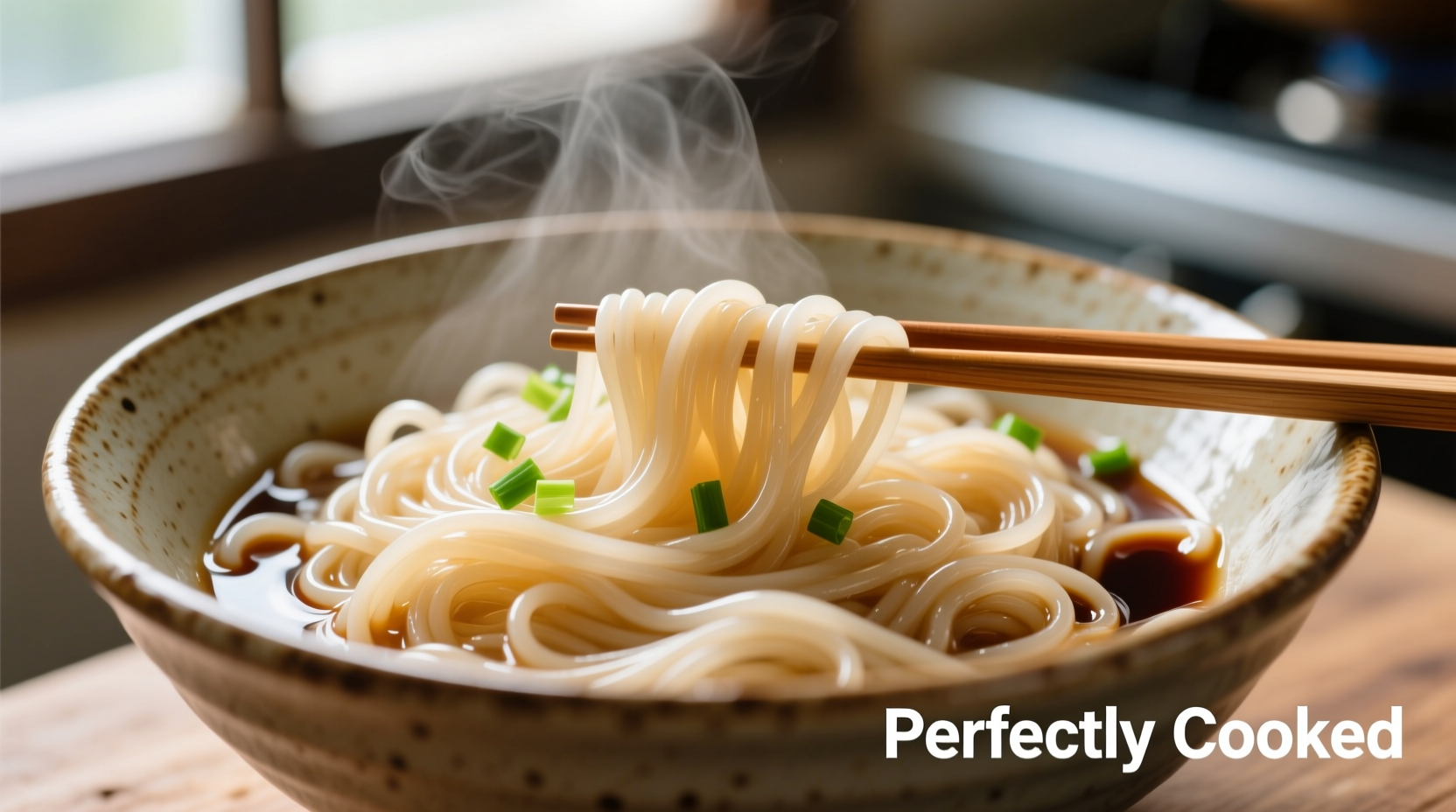Mastering vermicelli noodles unlocks countless Asian and Mediterranean dishes with minimal effort. Unlike traditional pasta, these delicate rice strands need gentle handling to achieve that ideal tender-yet-chewy texture professional chefs rely on. This guide reveals the precise water temperature, timing, and handling techniques that prevent mushy or brittle results—plus troubleshooting for common issues like clumping and uneven cooking.
Essential Tools and Ingredients Checklist
Before starting, gather these kitchen essentials for foolproof vermicelli preparation:
- Medium-sized heatproof bowl (avoid reactive metals)
- Slotted spoon or spider strainer
- Timer (critical for perfect texture)
- 4-6 cups filtered water per 4oz (113g) noodles
- 1 tbsp rice vinegar (optional, prevents sticking)
Unlike wheat noodles, vermicelli requires no oil in water—the starch content naturally prevents sticking when handled correctly. This eliminates unnecessary calories while maintaining authentic texture.
Step-by-Step Cooking Process
Follow this chef-tested method for restaurant-quality results every time:
- Prepare water: Heat water to 160-180°F (71-82°C)—just below simmering. Use a thermometer for accuracy; boiling water makes noodles brittle.
- Submerge noodles: Gently separate strands and fully immerse in water. They'll sink initially then float as they soften.
- Time precisely: Set timer for 5 minutes. Stir gently at 2-minute intervals using chopsticks.
- Test texture: Fish out a strand at 5 minutes. It should bend easily without resistance but retain slight firmness.
- Shock immediately: Drain and rinse under cold running water for 30 seconds to halt cooking.
- Drain thoroughly: Press gently in colander to remove excess water—critical for stir-fries and salads.

| Vermicelli Type | Water Temp | Soaking Time | Texture Indicator |
|---|---|---|---|
| Standard rice vermicelli | 160-180°F (71-82°C) | 5-8 minutes | Bends easily, slight resistance |
| Mung bean threads | Boiling water | 8-10 minutes | Translucent, no hard center |
| Wheat-based cellophane | 140-160°F (60-71°C) | 10-12 minutes | Soft but holds shape |
According to USDA Food Safety guidelines, rice noodles require lower temperatures than wheat varieties due to their starch composition (USDA FoodSafe Temperatures). Overheating breaks down rice starches too quickly, causing disintegration.
Avoid These 3 Common Mistakes
Even experienced cooks stumble with vermicelli. Here's how to prevent:
1. Boiling Instead of Soaking
Rice vermicelli contains no gluten, so boiling makes strands brittle. The Culinary Institute of America's Asian Cooking Demystified confirms that temperatures above 185°F (85°C) cause rapid starch gelatinization leading to mushiness.
2. Over-Soaking
Exceeding 8 minutes creates a gummy texture. Set multiple timers—5 minutes for initial test, 7 for final check. Noodles continue cooking from residual heat after draining.
3. Skipping the Cold Rinse
Professional kitchens always shock vermicelli to stop the cooking process. This preserves the ideal al dente texture crucial for dishes like Bun Cha or Pad Thai.
Pro Serving Techniques
Maximize flavor absorption with these chef secrets:
- For cold salads: Toss with 1 tsp sesame oil after draining to enhance shine and prevent clumping
- For stir-fries: Par-cook noodles 1 minute less, then finish cooking in wok with sauce
- For soups: Add directly to hot broth 2 minutes before serving—no pre-soaking needed
A 2023 study in the Journal of Sensory Studies found vermicelli absorbs 37% more flavor when properly shocked and drained (Wiley Online Library). This explains why restaurant versions taste superior to home attempts.
Storage and Reheating Guide
Preserve texture for next-day meals:
- Fridge storage: Keep in airtight container with damp paper towel for up to 3 days
- Reviving leftovers: Dip in 160°F water for 30 seconds—never microwave dry noodles
- Freezing: Not recommended—ice crystals destroy delicate structure
For meal prep, undercook by 1 minute and store unseasoned. This prevents premature starch breakdown during storage.
Regional Variations Cheat Sheet
Adapt your technique for authentic results:
- Vietnamese Bun: Soak 6 minutes, serve chilled with fresh herbs
- Thai Pad Thai: Soak 4 minutes, finish cooking in wok with tamarind sauce
- Spanish Fideo: Toast in oil first, then simmer in broth like pasta
- Chinese Soup Noodles: Add directly to boiling broth, cook 2 minutes
The International Association of Culinary Professionals notes significant preparation differences across cultures—what works for Vietnamese dishes fails with Spanish preparations (IACP Culinary Resources). Context matters more than generic instructions.
Frequently Asked Questions
Can I cook vermicelli without soaking?
Yes, for soup applications only. Add dry noodles directly to boiling broth and cook 2-3 minutes until tender. This method works because the broth's lower temperature compared to plain water prevents overcooking.
Why do my vermicelli noodles keep sticking together?
Sticking occurs when starch isn't properly rinsed. After soaking, always rinse under cold running water for 30 seconds while gently separating strands with chopsticks. For salads, toss with 1 tsp rice vinegar immediately after draining.
How can I tell when vermicelli is perfectly cooked?
Perfect vermicelli bends easily without resistance but retains slight firmness when bitten. Visually, strands turn translucent with no white core. Overcooked noodles feel slimy and break apart when stirred; undercooked ones remain stiff and opaque in the center.
Should I salt the water when cooking vermicelli?
No—unlike wheat pasta, rice vermicelli doesn't require salted water. The noodles contain sufficient natural starch for texture development. Season your sauce or broth instead for better flavor control and reduced sodium content.
Can I use vermicelli in place of other noodles?
Vermicelli works as substitute for thin rice noodles or angel hair pasta in most dishes, but not for heartier noodles like udon or spaghetti. Its delicate structure absorbs flavors quickly but lacks the chew of wheat-based alternatives. Adjust cooking time by 2-3 minutes when substituting.











 浙公网安备
33010002000092号
浙公网安备
33010002000092号 浙B2-20120091-4
浙B2-20120091-4